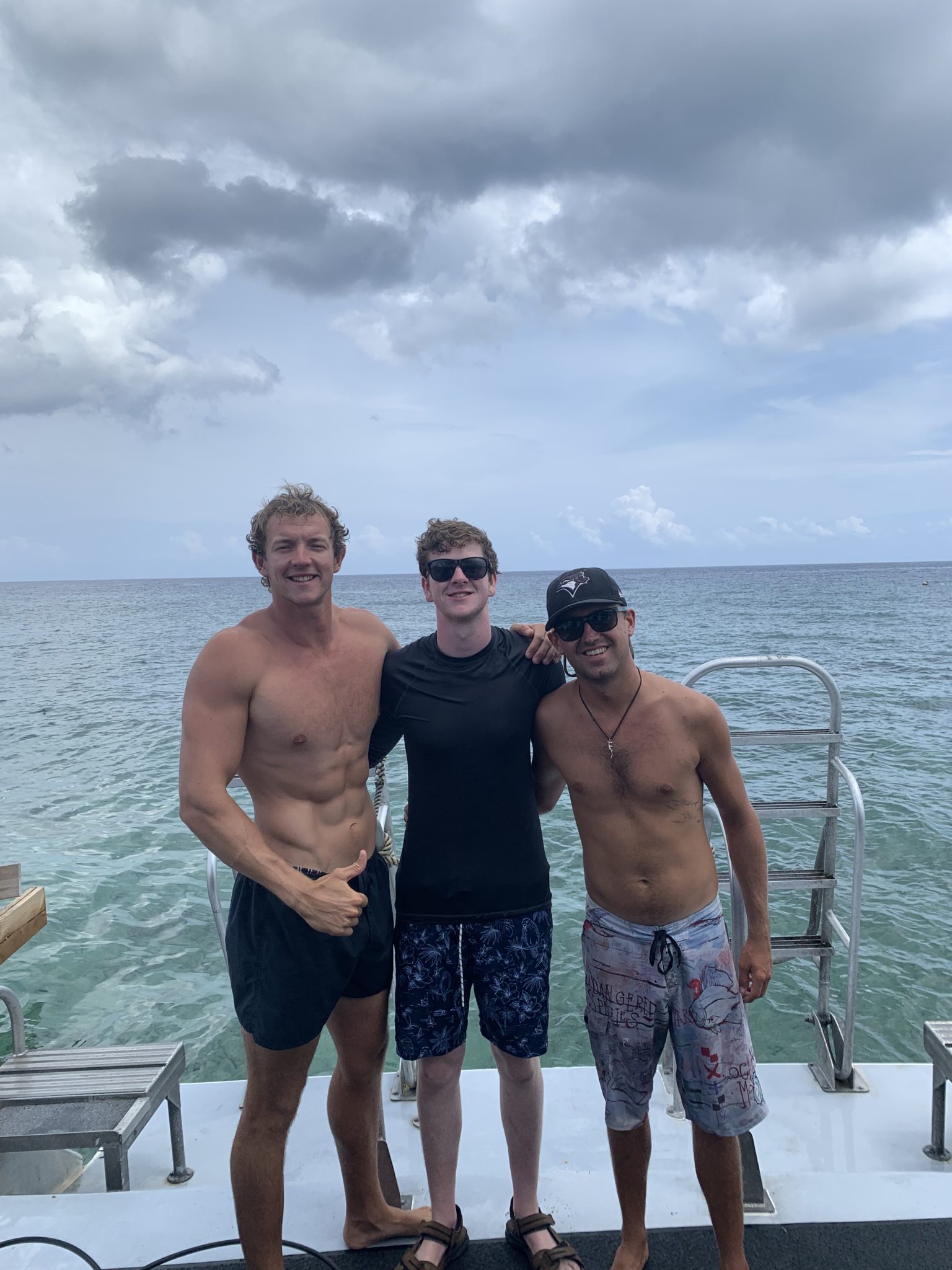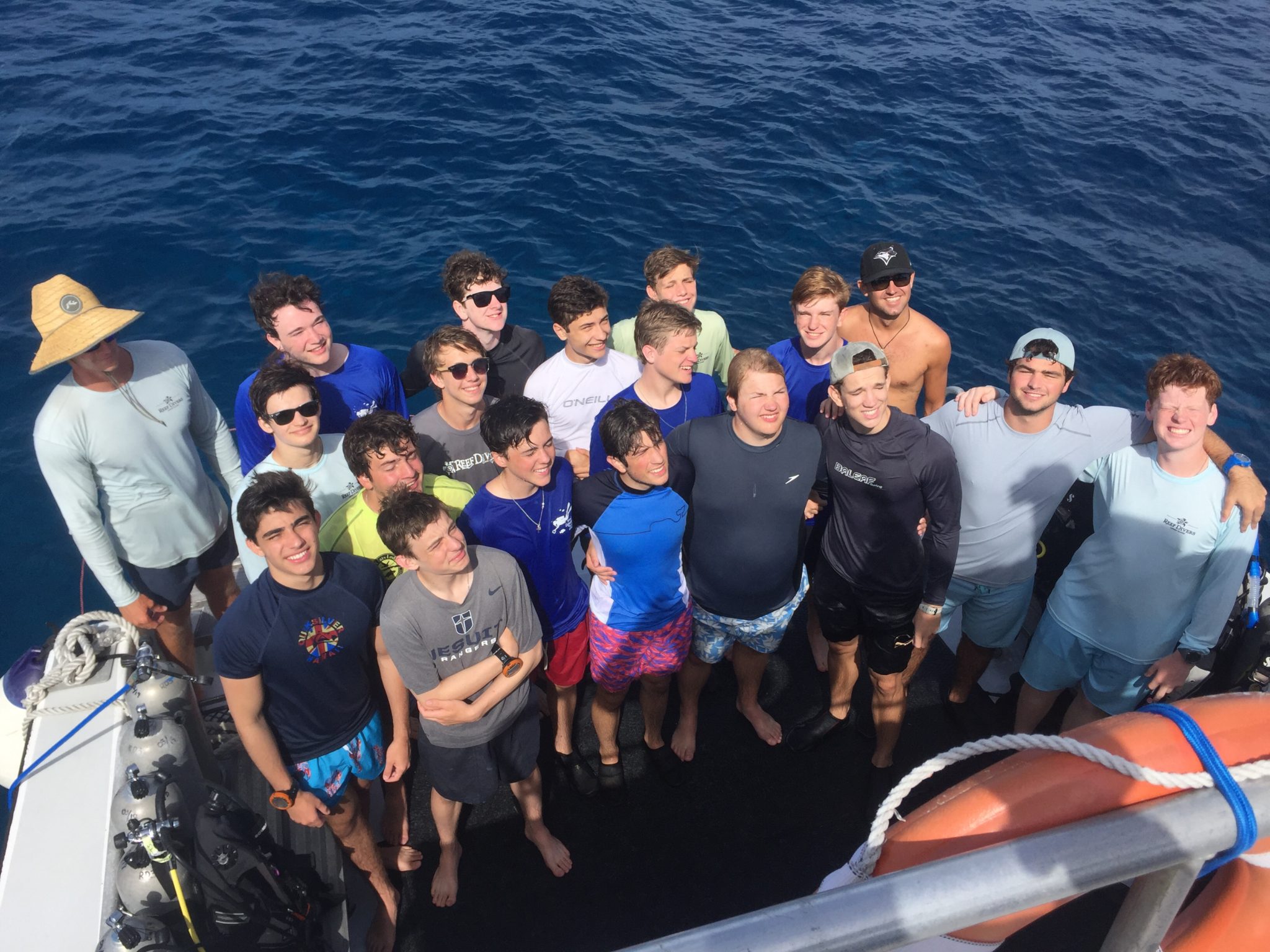Today we woke up bright and early for our last two dives in the Grand Caymans: Sand Hole and Ocean Pointe. Both dive sites were beautiful, and I was glad to finish out my trip with two strong dives.
Sand Hole Reef was a really cool site. Our dive master, Curtis, lead the dive for this one. That was the first time I have seen a sea turtle swimming in the Caymans. Luke and I saw two hawksbill sea turtles, and we knew they were hawksbill because of their beak-like structure on their heads. The first turtle ate the sponges off of a cliff edge; the second turtle ascended to the surface of the water, and we were watching, mesmerized by its poise and fluid motions. Sea turtles are air breathing reptiles, so they have to surface to breath; however, they can hold their breaths for several hours. Luke and I also saw a spiny lobster bidding out in a small cave. We knew it was a spiny lobster because those are the only species of lobsters found in the Caymans. During the day, lobsters tend to stay hidden, usually in caves or crevices, so they usually come out at night. That is why we saw two lobsters during our night snorkel. We surfaced after a max depth of 80ft and dive time of 30min. We had a 45 minute surface interval and headed to our final dive site of the trip.
Ocean Pointe Reef was a giant reef surrounded by patches of sand. This time, Bernie (our second dive master) lead our dive. During our dive, Luke and I saw five trumpetfish. Known for their long, skinny bodies, these creatures move by scrunching up their bodies and releasing all the force at once, propelling them forward. Luke and I actually saw one hunting, and we hovered their for four minutes, captivated by its tactics. The fish actually failed to catch its prey, but we still got to see the trumpetfish’s strategy, to camouflage in a coral and jump out at an unsuspecting fish. On top of that, we saw two lionfish hiding out inside a cave. They were black with white stripes along their fan-like fins. Studies have shown that lionfish are intelligent, and they can send signals to each other about danger. That makes sense because each time divers are near them, they hide. Divers have been known to kill them because they are invasive species. Our last cool fish we saw was a lemon ray, burrowed in the sand. Lemon rays are small in nature, and this one was underneath a ton of sand, resting. We reached a max of 60ft and were down there for 45 minutes. We then surfaced and headed back to Cobalt Coast for the last time.
My friends and I played our last game of volleyball; this time, however, the teams were even. Jake, Luke, and I went head-to-head against Sam, Nash, and Brandon. After the intense match, I have no idea who won. We then had a great lunch, and then adjourned to our rooms for relaxation. I went to the dive shop and bought more stuff, but I got a dive log and started filling it out with our dive information. We then had a barbecue cookout with everyone. For our final activity, we had a prayer service where each house/room was responsible for a part of the service. My group got how diving has impacted our relationship with God, and overall, the prayer service went very smoothly. The teachers then surprised us with a video of our entire trip, and I loved it.
This trip has been amazing, and I am so honored and blessed to be apart of this opportunity. I have enjoyed this trip better than I enjoyed the Hawaii trip. We got to do 13 dives, which is an incredible opportunity. So thank you all for supporting me.
Here are the photos of the crew and group for the Twin Sister:


~ Aidan Hoofard


